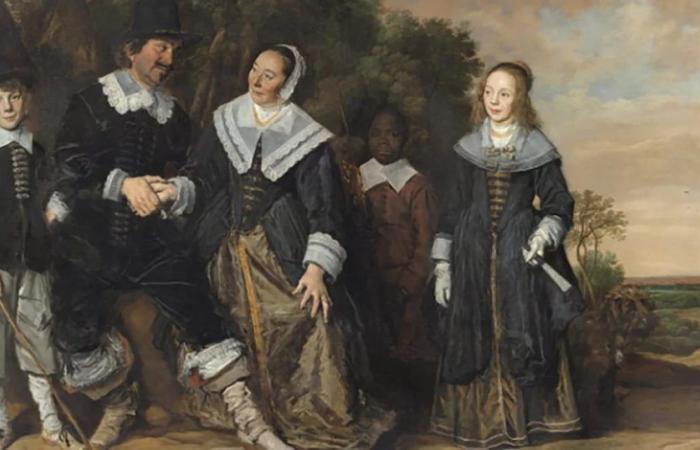He Thyssen-Bornemisza Museum has made a “necessary examination of conscience” for its critical transformation that involves a rereading of its collections from the point of view of decolonization that, its director has assured, Guillermo Solanais not an “automatic synonym for restitution.”
Colonial memory in the Thyssen-Bornemisza collections is the title of the exhibition that highlights the consequences of colonialism and its presence in the West through idyllic images that mask inequality and violence, an exhibition that “has nothing to do with any current political situation” but “ It comes from very far away,” Solana stressed.
A debate that arose earlier this year after Spain’s Minister of Culture, Ernest Urtasunwill highlight the need to overcome in state museums “a colonial framework or one anchored in gender or ethnocentric inertia.”
“I have been at the Thyssen for 19 years and I have never received direct or indirect instructions, suggestions or indications from a member of the Government regarding exhibition programming,” stressed Solana, for whom in Spain everything is interpreted depending on the situation. politics, when the debate on the decolonization of museums “comes from very far away.”
An exhibition is not organized in three months or six “and anyone who says that whoever emerged from the current Government or the current situation has given instructions regarding the exhibition is either ignorant or acts in bad faith, which is more common” Solana stressed, adding that it is not innocent that the media automatically identify “decolonization to restitution.”
In his opinion, it is about “causing alarm in the public and seeing it as a squandering of the national heritage.”
The exhibition, which will remain open until October 20, brings together 58 works from the historical collections, both the permanent one and that of Carmen Thyssen, and 17 contemporary pieces from the TBA21 collection.
The origin of the exhibition, has been related Juan Ángel López-Manzanares, one of the four curators of the exhibition, emerged in 2019, the year in which the International Council of Museums (ICOM) proposed how to alleviate the Eurocentric biases that exist in most Western museums. Together with López-Manzanares, they are curators of the exhibition Alba Campo Rosillo, Andrea Pacheco González and Yeison F. García López.
Through six thematic sections, Thyssen addresses this re-reading of his works that respond to the fundamental questions about decolonization: extractivism and appropriation, the racial construction of the other, slavery and colonial domination, the escape to new “arcades.” , the body and sexuality and resistance and marronage.
From the beginning of the exhibition, attention is drawn to the presence of Africans in the center of Madrid in the 17th century through a page who appears in the foreground of the painting ‘View of the Carrera de San Jerónimo and the Paseo del Prado with procession of floats’, of Jan van Kessell III.
The section on extractivism raises the exploitation of natural resources in occupied lands and the abuse of human labor in the colonial system, with still lifes and still lifes with objects from the high seas. This includes works such as ‘Girl’s Head’ (1893, 1984), by Paul Gauguin or ‘Study for the head of Nude with Cloths’, (1907) by Picasso.
It also analyzes the “racial hierarchization of the other” and “scientific racism” in which Europe claimed cultural supremacy with works such as ‘Arab Horseman’ by Eugene Delacroix or the ethnographic work of Karl Bodmer.
One of the central paintings in the exhibition is ‘Family Group in a Landscape’ (1645-1648), by Frans Halsa large canvas that represents a Dutch family with an African teenager who must have been taken to work as a slave since their presence demonstrated their social status.
The idealized vision of new territories and the sexualization of non-Western women are shown with paintings such as ‘Two female nudes in a landscape’ by Otto Mueller.
Source: EFE


